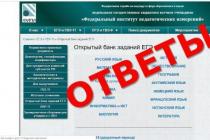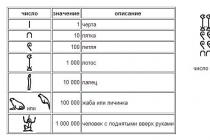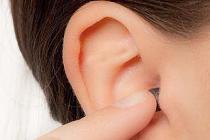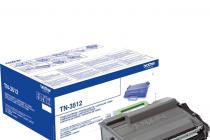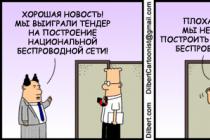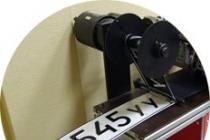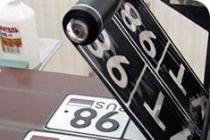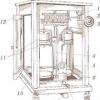"If there is no difference, then why pay more?" - you say. However, not everything is as simple as it would seem at first glance.
Below are the most frequently asked questions from consumers, which we have tried to answer.
Original cartridges are made by the same manufacturer as your printer, while a compatible sibling is from a different factory. However, it has the same characteristics as the original.
Compatible cartridge can be as safe and reliable as the original. The main thing is to make sure you are buying it from a reliable supplier. If you find an honest seller, you will buy a quality product and save a lot of money. However, do not rush to purchase a large batch at once. First, check how well your compatible cartridges do the job.
Why are compatible cartridges cheaper than originals?
Originals or original cartridges should recoup all the manufacturer's expenses, primarily the money spent on their development, design, manufacture and testing. The company needs to get some of the money back, so these originals are expensive. Compatible manufacturers don't have this overhead, so they're willing to sell their cartridges for a lot less.
Does low price affect print quality?
In principle, it shouldn't. The manufacturers of compatible cartridges try to keep the ink or toner composition almost identical to the original, so you shouldn't notice any difference, but remember that you only need to buy from a trusted dealer.
Can compatible ink cartridges impair printer performance?
It is unlikely that one cartridge can harm your printer. Even if this happens, which is generally unlikely, an honest supplier will offer you repairs at their own expense.
If you bought your printer less than a year ago
Usually, the manufacturer provides a one-year warranty for the product. If the printer is under warranty, the manufacturer must first prove that the failure was caused by a compatible cartridge.
Ideally, the manufacturer should send a specialist to you to find out what is the cause and what caused the breakdown. If the printer itself is faulty, then the manufacturer must eliminate the defect, if the problem is in the cartridge, then the ink supplier's warranty should cover your costs.
If you have a long warranty period
All warranty periods come from the manufacturer, the terms of the warranty are also determined by the manufacturer. Therefore, in some cases, the manufacturer has the right to refuse you assistance if it finds out that you have used compatible devices.
In this case, ask the manufacturer to troubleshoot the printer; if they are not found, then the problem should be solved by the supplier of the cartridges.
It should be emphasized that compatible cartridges belong to the highest class of alternative consumables and differ significantly in their positioning, as well as in the manufacturer's efforts spent on their production, from refilled and remanufactured.
At the same time, the creators of original consumables (and, what is important, printers and MFPs in which they are used) do not cease to assert that only their “consumables” ensure the achievement of the quality and resource parameters laid down in the devices. Of course, they cannot explicitly prevent the use of third-party cartridges (except for purely technical issues, such as chipping), but in all warranty conditions for equipment there is a clause on a disclaimer in the case of using alternative cartridges.
Our test does not claim to be comprehensive and covers all possible combinations of devices and consumables. Rather, it is an attempt, although being a first approximation, to assess the true state of affairs in the environment of consumables and to compare the main parameters of the participants.
The set of types of cartridges that participated in the testing was selected from the following considerations: they should be actively used in real work, that is, they should be used in popular office equipment; produced not only by original, but also by alternative brands; be available for sale. It was a surprise that it turned out to be difficult to find samples of printers suitable for testing among the demanded "consumables", because some of them belong to models that have long been present on the market and have been discontinued.
That is why two new HP LaserJet P1005 and LaserJet P1505 printers (and we already have them!), As well as one HP LaserJet 1020 (provided by the VM laboratory), corresponding to a very large number of office equipment in terms of consumables, are taking part in the review. The choice of Samsung devices was complicated by the fact that alternative manufacturers have not yet developed built-in chips for the new models of cartridges from this company - accordingly, the release of compatible consumables is late. in which both original and compatible cartridges like ML-2010 and ML-1610 work. This allowed us to limit ourselves to just one printer for testing a wide range of consumables.
Testing technique
To compare the resources and print quality of original and compatible cartridges for laser printers, a special method was developed (based on the one available for testing monochrome printers). The task of checking the print quality throughout the entire life cycle was solved by conducting control tests: for models with a declared resource of 1.5 thousand. prints - at marks of 500 and 1000 sheets; for cartridges designed for 2 thousand pages - also 1500, and for "three thousand" - respectively, also for 2000 and 2500 sheets. When the last of the above points was passed, control tests were displayed every 300 sheets, and so on - until the resource was exhausted.
The image set includes two vector samples for checking resolution, dot gain, fills in low saturation areas, and outputting gradient streamers. Printing texts in three different fonts and size 1.5–15 points allows you to assess their readability; a photograph containing smooth transitions of halftones and wide areas of gray, makes it possible to determine the uniformity of the application of the dye on both coordinates and the influence of consumables on the quality of screening. To detect unintended toner spills, a control white sheet was displayed, and a test block was completed to detect ghost images and measure the density of the wearable dye. It contained contrasting figures and areas with 100% filling, located from them at a distance equal to half the drum circumference, as well as at the corners and in the center of the sheet.
For printers with asymmetric maximum resolution modes, the first four test sheets were output in it and then duplicated in maximum symmetric. In total, it took up to ten pages to examine the print quality at each checkpoint.
After their output in the driver, the settings were set to normal quality (or 600 dpi) and the sheets were printed with 5% coverage in portions of 100 pieces with a readability control at each last. The cycle was repeated at each test point, which was located after 500 or 300 pages according to the methodology.
Before being installed in the printer, the cartridges were freed, if necessary, from the safety pins and tapes and vigorously shaken to distribute the toner evenly.
Signs of exhaustion of the resource and the completion of testing were noticeable areas of non-printing, stripes and other light artifacts on the control or resource test sheets. When they were detected, the displayed number of copies was counted as the final result, and the subsequent shaking of the cartridges could be performed only to obtain additional information about the remainder of the powder, but the sheets printed after it were counted.
It is worth emphasizing that the results obtained have nothing to do with the numbers declared by the manufacturers, since our resource test was interspersed with quality control, in which sheets of much denser filling were used than the standardized 5%. They can only be compared with each other and only those derived from a single printer. It is with this approach that the applied methodology gives equal test conditions.
The fill density was measured in the corners and in the center of the sheet with areas of 100% black, the average values are given in the table. For this, the first checkpoint and the closest one until the end of testing the cartridge were selected. The data were obtained using an X-Rite "Eye-one Pro" spectrophotometer, which was kindly provided by the "VM" company.
Expert opinion
Yulia Sokolova,
marketing manager in Ukraine and Moldova, representative office of "Epson Europe B.V."
According to the experience of Epson service centers, compatible consumables not only reduce the print quality, including the resistance of documents to external environmental factors, but also have a negative effect on the operation of the print head in inkjet printers, and laser ones even lead to health problems. For example, filed by the service center of the representative office of Epson Europe B.V. in Russia, inkjet printheads fail in 80% of cases when compatible consumables are used. For the elimination of such a breakdown, the user pays a fairly high price, however, as a result, he often makes claims to the manufacturer not of consumables, but of equipment, which affects the company's image. This is one of the reasons why it is our policy to prohibit the use of third-party consumables in Epson printers.
Our main task is to educate users about the rules of operating the equipment. And the first of them is working with the printing system (printer, cartridges and paper) as a single mechanism. All components of this complex are developed taking into account their mutual influence on the result in order to obtain high quality prints throughout the life of the device. If one of them is replaced with a lower quality one, then such a result cannot be achieved. The production of original consumables in terms of purity and level of automation is comparable to the production of printed circuit boards. Those who produce compatible consumables do not have access to the development of the entire complex, but conduct their research on the basis of the ready-made material in conditions different from the original ones. All of these factors prevent Epson from responding to other companies' products.
At the European and global level, Epson is fighting for patent protection. In the event of patent infringement, she holds the infringing company liable in court. On the territory of Ukraine, we do not conduct an aggressive struggle, our company is engaged in explanatory work among users, starting from the points of sale of equipment: when buying, the consumer receives information about the importance of using original consumables from sellers and promoters, and on the box and on the device itself, the markings of the cartridges and their packaging are required in detail, which gives the ability of the buyer to distinguish between original and compatible products. Also included in the box with the printer is a test set of papers and cartridges to evaluate print quality and select the correct media. Further, we use media support, including the Internet and print media. Recently, a website has been opened that helps the user to understand what problems he will face by using compatible consumables of different types: inks.epson.ru
Epson is well aware of how much consumers want to save on printing. Especially for the CIS market, we produce sets of cartridges and paper with the possibility of 10-30% savings. Of course, it is also important for us to have the entire range of original consumables on store shelves, which is why we have created bonus programs for our partners who are successfully operating in the Ukrainian market. We are also preparing a special anti-crisis program that will help users to remain faithful to the original products in the current situation, since only under this condition can the guaranteed quality and service life of the device be achieved.
HP
The three types of cartridges from this company that took part in this review belong to devices of different generations. The Q2612A model is used in a wide range of technology that has already become familiar in many offices, and also in the latest printers.
HP print cartridges are shipped in a colored cardboard box that includes the model designation, a list of compatible printers and MFPs, a multilingual warranty statement, and an email address for cartridge yields. Printed underneath the end caps are instructions for replacing and installing consumables in the appropriate HP printer. Sealing of cartridges is carried out by packing them in a transparent polyethylene bag with pneumatic shock-absorbing cavities throughout the area.
The results of the test were stunning - the level of quality, productivity and reliability of original HP toners turned out to be an order of magnitude higher. Of the 168 remanufactured cartridges tested, 47 achieved record low output - over 50% of prints produced on them were draft quality or not workable at all, while 96% of documents printed using Original HP cartridges were suitable for any task. Taking into account the re-output of low-quality documents and problems arising with low-quality cartridges, the cost of printing on non-original consumables can be more expensive.
We are active in outreach to end users — we highlight the benefits of Original HP supplies, and we run a variety of promotions to motivate both end users and the seller — by providing them with objective information that they convey to the consumer. In Ukraine, as in other countries, HP has nothing against manufacturers of compatible cartridges if they do not pass off their products as original. Competition is a boon for the healthy development of any company’s business, but only as long as product differences are correctly communicated to end users.
We are convinced that it is up to the customer to decide which cartridges he needs, and therefore the offer on the market must meet different needs. We usually recommend our partners to have different products in their portfolio, insisting only on equal promotion of brands. Our task is to constantly improve the availability of original consumables on the market and expand their range.
HP offers options that can benefit a wide range of consumers: print a lot, price sensitive, and specialty creative kits that expand the capabilities of your HP printer. There are discounts for large corporate users. The prospects of cooperation, the term of the contract and the volume of the purchase are taken into account. Customers who purchase not only consumables, but also printers can count on additional support.
Research by IDC suggests that by actively managing your infrastructure, environment and print workflow, you can reduce your overall print costs by more than 30%. That is why HP cartridges are equipped with microchips, which, in combination with special software products (HP WebJetAdmin), are a key link in the automation and control of printing. Tales from the fact that the manufacturer specifically integrates chips into cartridges in order to prevent them from refilling, show the "deep" knowledge of competitors in this matter.
There are also other programs and initiatives. For example, HP Pay For Print is a fully automated supplies ordering service that optimizes supplies replenishment, dramatically reduces your printing costs, and offers comprehensive monitoring capabilities. This is the ability to move from buying a cartridge to a pay-by-copy service with support from HP and Authorized Service Partners.
More than five centuries have passed since the invention of the first printing press. During this time, technologies, and means, and methods of printing have changed, only a person's desire to see what has been printed has remained unchanged. The word "printer" has become so firmly used that it is understandable even for a primary school student. And if older people still remember their term papers and diplomas printed on a dot matrix printer, then the current generation divides printers into inkjet and laser. Let's talk about the latter.
Which brand's laser printers are better?
There are more than a dozen popular laser printer manufacturers. The irrefutable leader in terms of the number of models in this segment is the company Hewlett-Packard... HP printers are reliable, easy to use, and a wide range of prices and features make them affordable to every consumer group. Unfortunately, the original cartridges of the company are also in the lead, but only in terms of their cost and the availability of solid protection against any alternative.
In terms of reliability and popularity of HP products, printers of companies are not inferior to Canon, Xerox, Brother... These are time-tested brands, and they keep their brand with dignity.
Those who want more freedom of choice can pay attention to laser printers from Japanese manufacturers. Kyocera, OKI, Konica Minolta, Ricoh - among them there are very interesting specimens.
Company Samsung is also represented on the market of laser printers in Russia, but the production of printing equipment is clearly not her strong point now.
LED Printers - One Step Ahead
It is worth noting that in recent years, devices based on a different technology have captured an increasing share of the laser printer market - LED... There are several fundamental differences between LED and laser printers.
- The printheads of such devices have no moving parts, so they are more reliable and less noisy.
- Light beams here are an order of magnitude shorter than laser beams and do not electrify the air with the release of ozone.
- LED printers are much more compact, especially color models.
Finally, information security issues can sometimes be critical. Having the necessary technique, it costs nothing to restore the "image" of a document printed by a laser printer from the characteristic radio emission. For LED devices, this approach is fundamentally impossible.
In this article, we will consider exactly printers - about - devices that can not only print, but also make copies and send faxes - we have already written.
There are many options, it remains to figure out which laser and LED printers on the Russian market are considered the best at the end of 2018 - beginning of 2019?
The main difference between a printer or other printing device from household appliances is the need to provide them with consumables (toner, ink, cartridges).
Expendable materials all office equipment manufacturers produce for their printing equipment. Such consumables are called original. However, the price of original products is very high, as the cost of a laser cartridge can be up to 50% of the price of a printer, and a set of inkjet consumables can exceed the cost of the printer itself. This fact is not beneficial enough for end users, which led to the formation of the industry of compatible consumables.
The production of toners, refueling kits, cartridges and spare parts has been established by the largest foreign manufacturers. International exhibitions are periodically organized: Paper World Frankfurt, RechargEast Trade Show, Remax Barselora, Cebit Hannover, Cebit Asia, where enterprises producing compatible consumables demonstrate their products and equipment for recycling.
More than hundreds of different manufacturers are represented at such exhibitions, they are attended by representatives from Russia, the USA, Eastern Europe, the CIS countries and China.
Thus, there is a whole industry of compatible consumables. The widest assortment is made up of inkjet cartridges, inks and refill kits. The market for compatible consumables is diverse. There are four main categories of consumable manufacturers.
The first category of companies
The first category includes large companies that have their own production facilities for the manufacture of consumables, from the production of cartridge bodies to the creation of high-tech inks.
Such enterprises have laboratories for research, testing and improvement of ink, since they are the main component of the cartridge. Their quality affects both the print quality and the life of the print head. Such enterprises can serve as OEM manufacturers of cartridges for other organizations, or supply them with their own components and ink. Examples of such companies are Wellprint, Jet Tec, Inktec, Techno, Vision.
Second category of companies
 The second category of companies includes manufacturers who purchase high quality ink, ink tanks or granular plastics from other companies to make consumables at their manufacturing facilities. Examples of such companies are:
The second category of companies includes manufacturers who purchase high quality ink, ink tanks or granular plastics from other companies to make consumables at their manufacturing facilities. Examples of such companies are:
- Trend International Ltd, which manufactures refill kits and cartridges under the Black Diamond brand. This company buys ink from the British manufacturer Coates, and plastic from DCI (Jet Tec trademark).
- HQ-Jet - manufactures refill kits for inkjet printers using inks from Techno Vision and LG Chemical.
The third category of companies
 The third category of companies includes enterprises that order refueling kits, quality cartridges, ink and toner from reputable manufacturers under their own brand name. One of these companies is ProfiLine.
The third category of companies includes enterprises that order refueling kits, quality cartridges, ink and toner from reputable manufacturers under their own brand name. One of these companies is ProfiLine.
All three categories of companies belong to the group of manufacturers of mid-range consumables. Thus, compatible cartridges such companies have a low cost compared to original products, but are not the cheapest consumables on the market.
Fourth category of companies
The fourth category of companies includes little-known companies that produce low-quality compatible cartridges. The only advantage of consumables from such manufacturers is their low price.
Among the manufacturers of compatible consumables, there are companies that produce not only cartridges, but also compatible spare parts for laser cartridges and for the printers themselves: toners, teflon rollers, photo rolls, squeegees and other spare tools and accessories designed to extend the life of cartridges and printers. devices. These companies include: Integral, Katun, Fuji, Uninet, Static Control, AEG, AQC.
There are also compatibility manufacturers offering equipment and accessories for recycling cartridges, these are various stations for cleaning and disassembling the cartridge structure, dispensers for refilling toner, workplaces with ventilation, vacuum cleaners for collecting toner.
Manufacturers of compatible consumables number in the hundreds. The following companies are represented on the Russian market:
- Print-Rite,
- Fullmark,
- Goodwill,
- Ink-Tec
- Imagine Graphics
- Hi-black
- Lomond,
- Cactus,
- Black diamond
- Profiline
- Colortek.
In order not to be mistaken with the choice of a high-quality compatible consumable, first of all, you need to be guided by the price. The lower the price, the more suspicious the quality.

